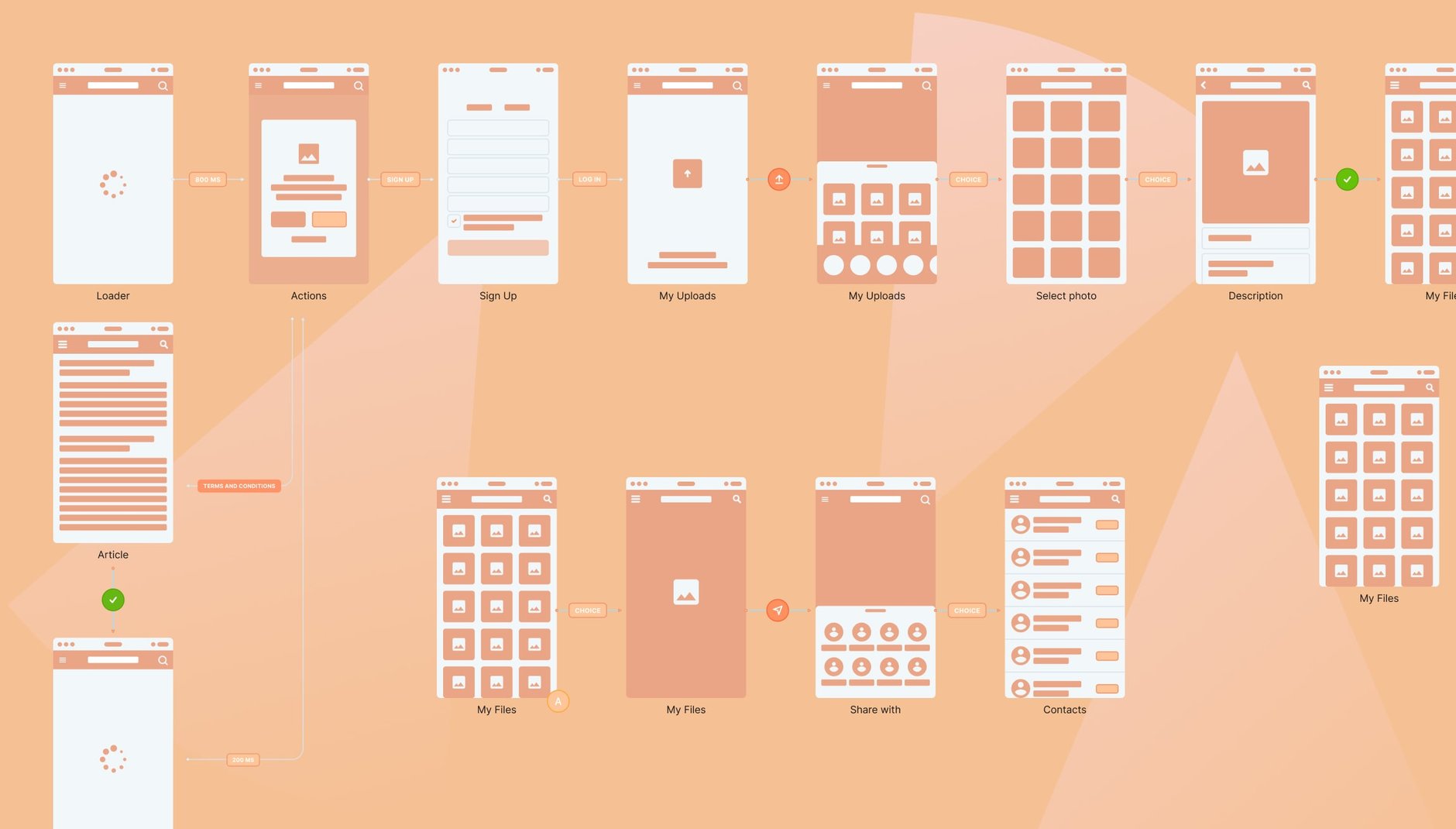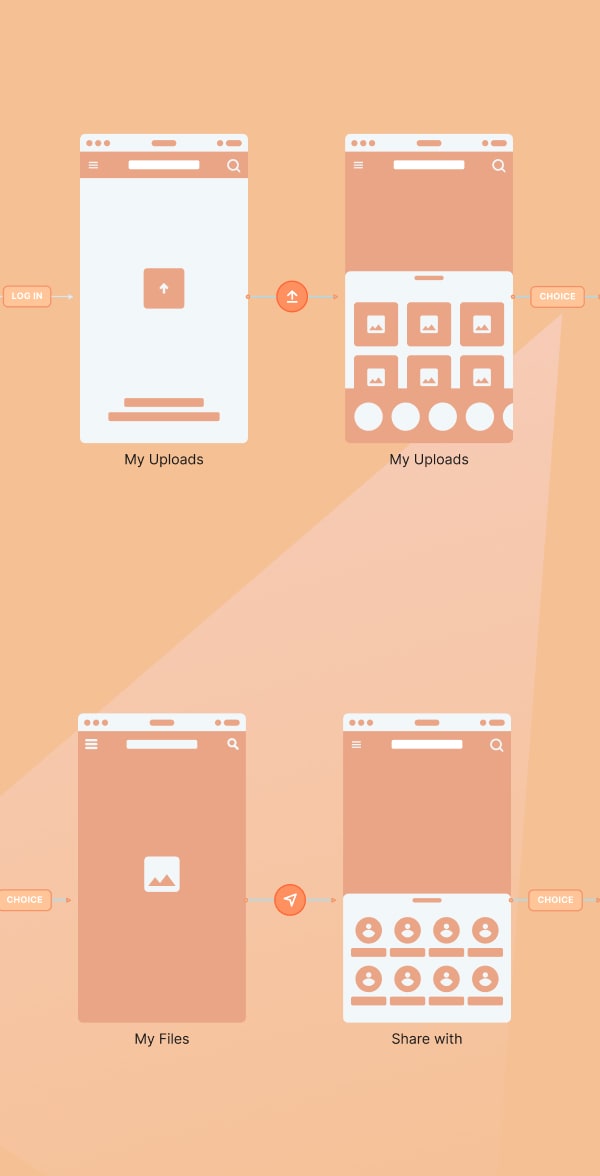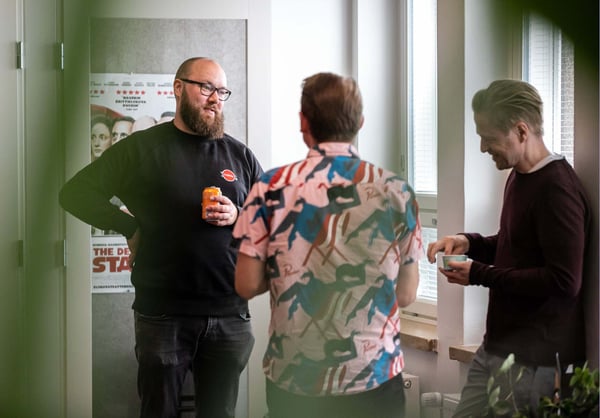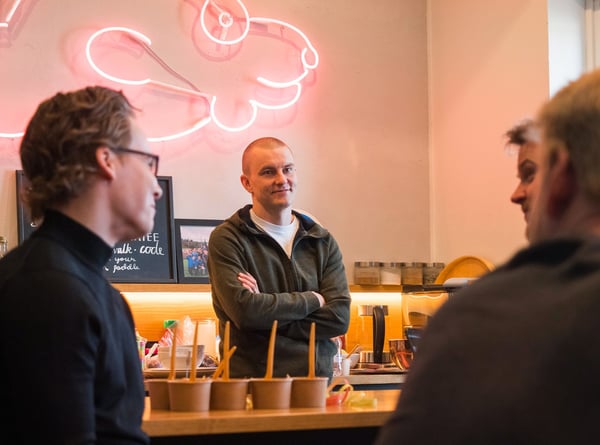The IT service industry is only becoming more saturated with competing services while customer needs are only more demanding. How has product design stepped up to the challenge?
Siloed and slow development methods don’t cut it anymore. People expect high quality, polished user experiences while simultaneously we are willing to invest much less time to spend inside apps and sites - users want value and they want it post haste. The old ways of top-down management and defining specifications that are slavishly implemented for months or years at a time before anything is released is no longer feasible - testing in production has become too costly and risky.
In an ever-increasingly saturated market users are demanding high quality services that cater to them, not a committee’s idea of what they think users want or need.
Although many companies continue to work in a “waterfall” like fashion, we see industry after industry being revolutionized by agile players which hone in on creating value for their customers and aren’t afraid of radically changing paradigms to make that happen. Just look at Wolt redefining the food delivery experience, or how Figma has completely upended the way design is done (more on that later).
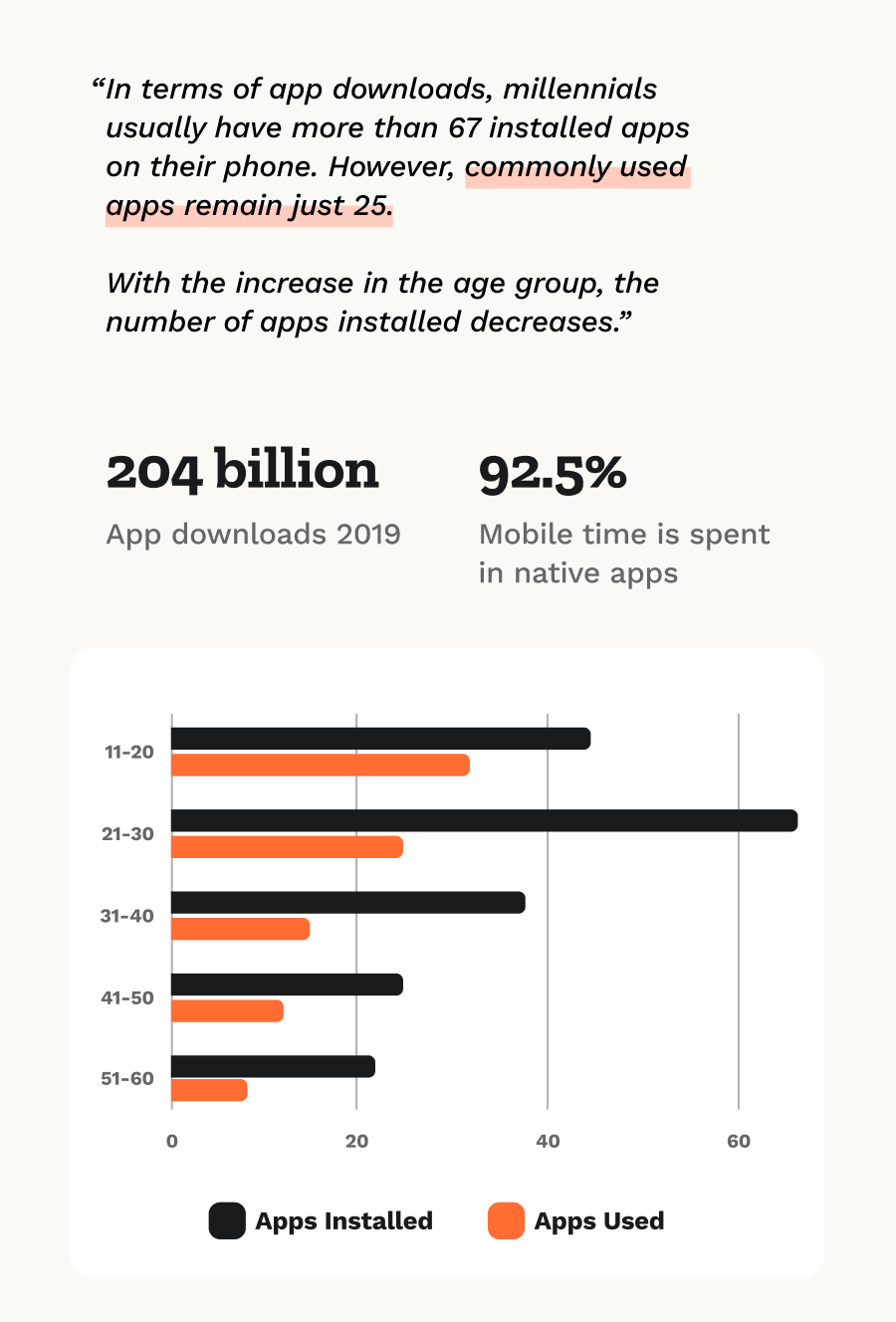
Picture: Source: Simform App Usage Statistics 2021
Markets are forcing organizations to be increasingly user-centric
As digitization continues its victory march and we find ourselves on our devices even more than before, the market is becoming increasingly difficult to enter. Daily, people are using a smaller amount of apps in their day-to-day life and spending even more time in native apps versus the web. Without a high-quality app experience that caters to the users needs it is difficult to get a foothold in users’ lives, even if there is a monetary incentive to use your service. Very few users are willing to suffer through a poor experience even if it would save them a percentage on their purchase.
The solution to this is to conduct user research - interviews, workshops, ethnography, prototype usability tests and identifying not only unique selling points to differentiate your offering from the competition but also enabling better ways for your users to achieve their intended goals, to better cater to their needs. At Fraktio we see businesses expecting a deeper discovery phase in the initial phases of new work and are much more open to user research than ever before, a change we feel very positively towards and capitalize on whenever we can.
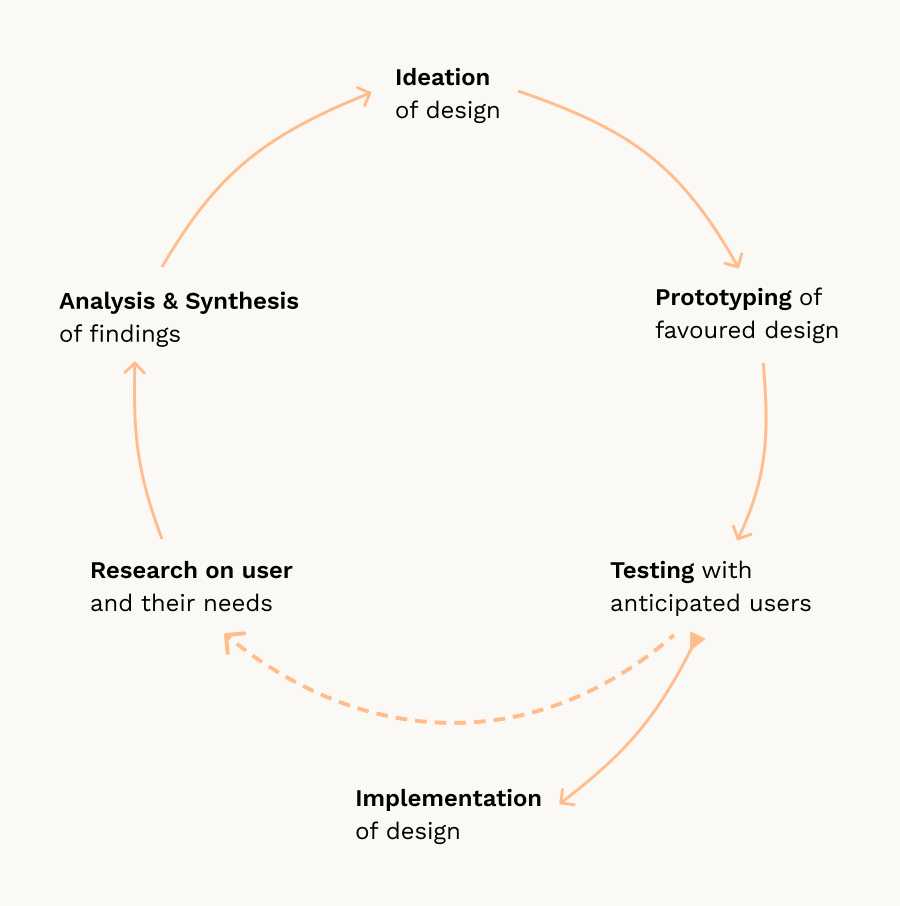
Sprints are an increasingly common tool to help keep workloads reasonable and realistic. Constant iteration and brave experimentation with rich feedback will take a business further than a highly-polished pitch that’s never seen the users it intends to serve. Focusing on processes and operation are more likely to guarantee the intended outcome rather than relying on a single release that will then merely be supported as sales tries to squeeze every euro out of it.
Product designers are increasingly doing more than just designing
Design has always been a multidisciplinary field that combines information architecture, visual design principles, psychology, and project management, to name a few, to achieve defined goals. Increasingly designers are also facilitators and business designers, steering teams in the right direction and demystifying design in order to democratize it and involve a greater amount of people.
Designers are increasingly aware that the best outcomes come when we break silos and involve a wide array of people in our team into the design process. Everyone from sales representatives to customer service agents have perspectives that can help uncover critical challenges that aren’t being addressed, helping not only users get more value and faster, but also frees up the teams time to focus on even more valuable goals. How much time is being spent on the same tasks, ticketing the same issues, without a resolution because that information never leaves the ticketing system? There are vast amounts of knowledge hiding within organizations that never get connected due to the nature of their structures.
Whereas before designers focused on creating the best result they can design, nowadays designers focus much more on helping enable co-creation that leads to the most measurably valuable end result. This requires more soft skills than ever before, which might be a reason why we at Fraktio are approached more and more to help teams develop their facilitation skills so that co-creation becomes more of the norm, even in very traditional organizations.
Ethics have also become a bigger point of consideration as designers are more aware of the impact their work can have on the world around us. As algorithms increasingly affect and shape our lives and digitalization replaces human-to-human options it is an increasingly greater risk that we might alienate large swaths of the population who don’t look and think like us, whether that’s due to cultural or health differences.
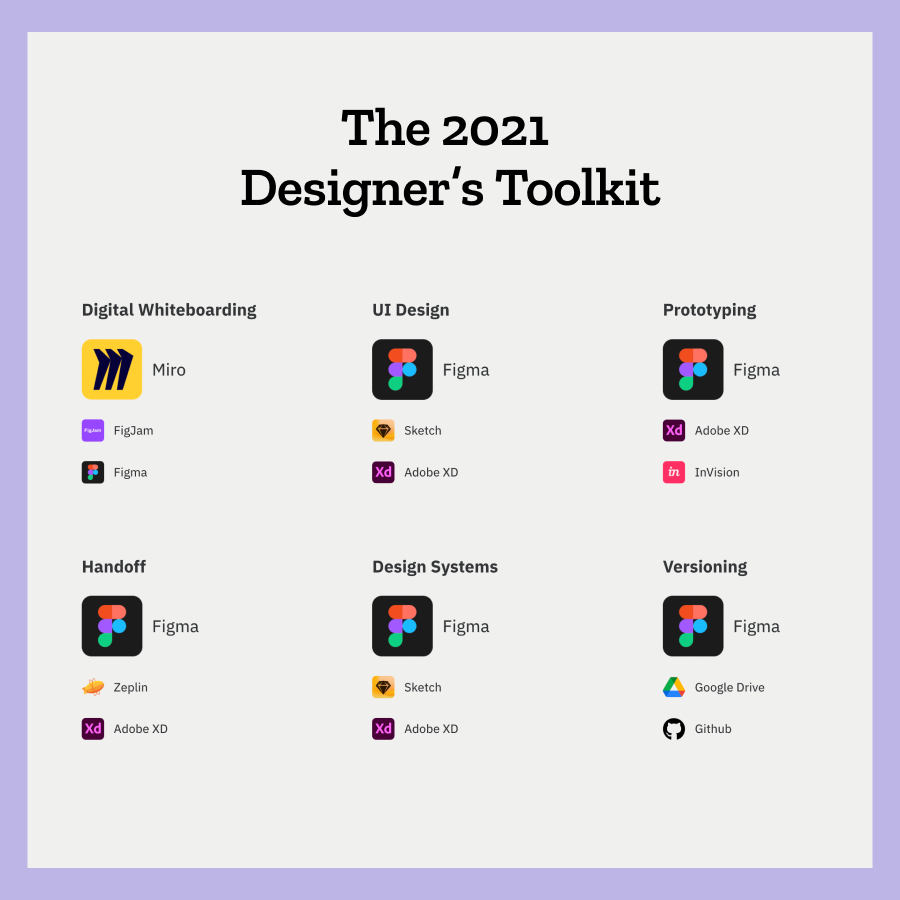
Figma is the tool of choice for designers
The UXTools 2021 survey paints a drastic picture: Figma reigns supreme. We are increasingly training companies to shift their design process into Figma as they are having difficulties recruiting talent because designers don’t want to be stuck working in Sketch or Adobe XD, tools that were the gold standard only a few years ago.
The shift from native apps and files to a web-based real-time multiplayer environment has been nothing short of a revolution. Instead of designers being siloed in their own world removed from the rest of the team and wondering how we will share our work, designers are finally also able to work together, just as developers have been able to for over a decade, whether that’s with other designers, engineers, product owners or users testing designs directly in the browser, no additional software required.
Instead of pushing pixels, designers are able to design by applying rules to layouts using the same principles as developers have, to create components and vast design systems that can be kept in sync with their code counterparts and collaborate with much greater ease than ever before. Services like Bravo Studio even enable creating full-fledged native apps using Figma and a database API.
Increasingly the lines between visual work and final code are becoming blurred, even if convergence is still some time away. Services like Framer are blurring the lines even further, allowing instant publication of designs as code and even implementing React code directly into designs to enable functionality previously exclusive to coded projects.
Adobe’s acquisition of Figma might slow this pace and in time cause another tool to take the mantle, but a clear successor is not apparent. Figma has a vibrant community and is continually releasing new features at breakneck speeds that is difficult to match. For now, Figma is the ultimate tool for digital designers.
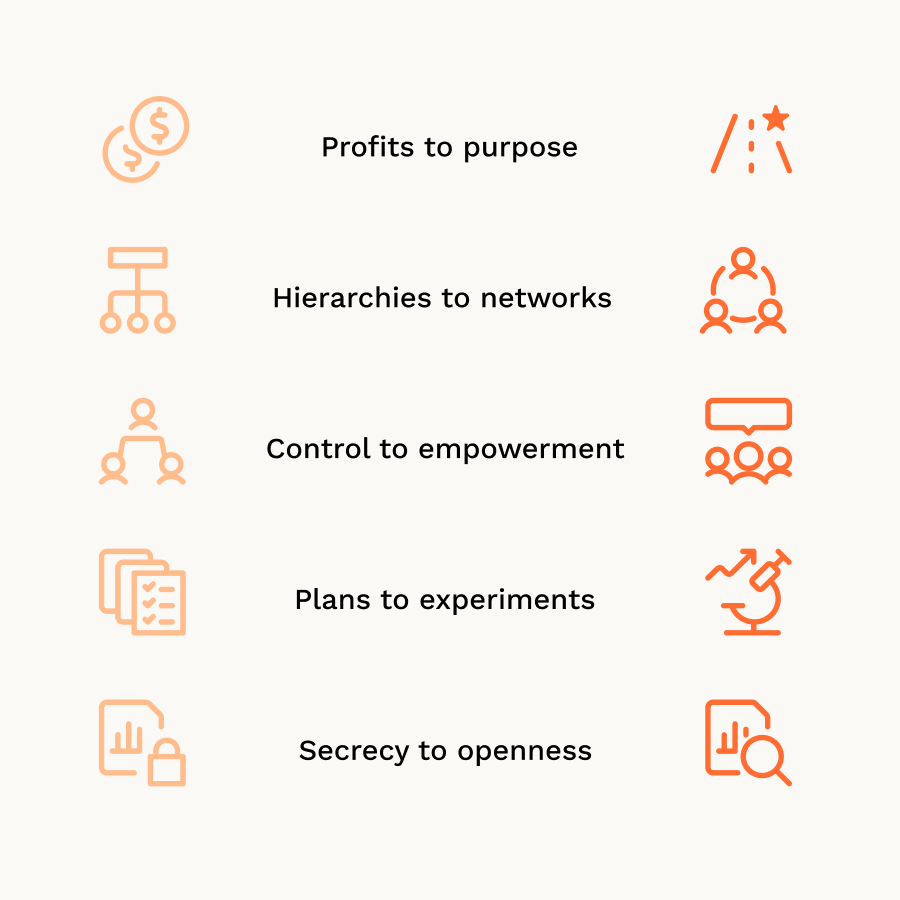
The future is unknown, but it will involve a lot of testing and iterating
The pace of change is only increasing. The value of user-centric product creation with an continual and iterative process is becoming more apparent and necessary for successful product development, as organizations can no longer afford the risk of long development times and uncertainty of how it will match user expectations.
Meanwhile the miniaturization of technology continues and allows us to create even more discrete experiences, embedding technology further into our everyday lives, from smart appliances to wearables. The trajectory is evident that we want interfaces and processes to occur as much as possible in the background and allow us to focus on being present. The only way we can find scalable solutions that are easy to use and operate with other products and services seamlessly will be to bring users into our development cycles and test even more than we are testing today.
If you are interested in learning more and hearing our views on AR/VR we recommend watching the entire keynote below or contact us to discuss more how we can help your business become more user-centric and achieve its goals with modern technologies.

